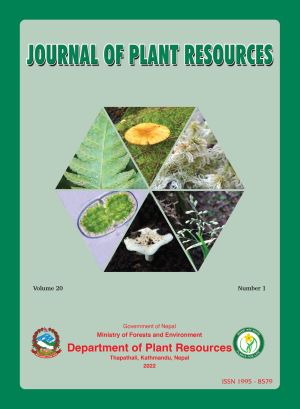Ethnomedicinal Plants Used by Pahari Community of Shikharpa Village, Lalitpur, Nepal
DOI:
https://doi.org/10.3126/bdpr.v20i1.56606Keywords:
Ailments, Indigenous knowledge, Medicinal plants, Traditional medicineAbstract
The ethnomedicinal plants used by Pahari community of Shikharpa village of Lalitpur district are documented. The data were collected using a range of participatory tools including the informants from different age group, gender and occupation and inventory method followed by group discussion. A total of 48 medicinal plants (MPs) from 47 genera and 33 families are documented that are used to cure different ailments in human beings and domesticated animals. Among 48 MPs, herbs are the most commonly used followed by shrubs, trees and a parasitic plant.The commonly used part/s to cure the ailments is leaves followed by whole plant, twig, root and fruit, bark, rhizome, seed and tuber and flower. The form of use is external as application on infected part or internally as therapeutic dose. Out of the 48 MPs, 12 MPs are high valued MPs, 17 MPs are moderately valued MPs and remaining 19 are low valued MPs. Based on the informants’ response on curing the diseases, 13 MPs are reported as highly effective, 26 MPs moderately effective and 9 MPs effective. The knowledge about the ethnomedicinal plants in the study area is transferred from generation to generation orally without any documentation till now. Such traditional knowledge needs to be documented before it gets lost and further scientific research on such plants needs to be conducted for drug development in future.




